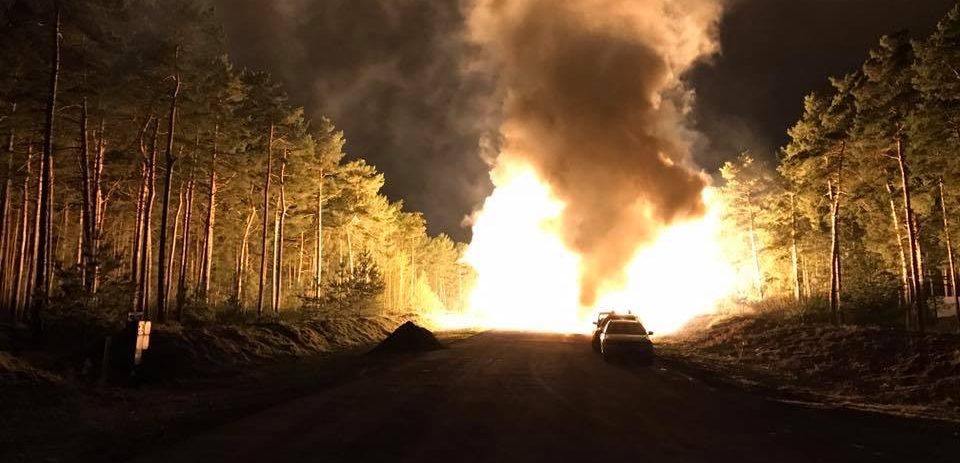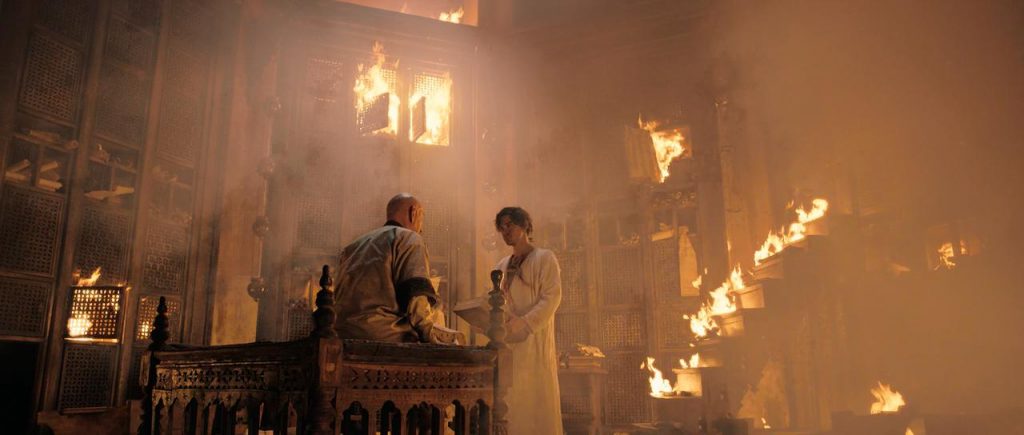Fire
Few special effects can be used as such versatile stylistic elements in a film like fire and flames. It serves many filmmakers as one of the most emotional stylistic devices in a picture, be it in an action movie or a romantic comedy. Burning candles, oil barrels, cars, campfires, houses or a whole forest — our expertise does not only lie in setting things on fire, but of doing it in a controlled and reproducible manner in front of the camera.
The types, shapes and colours of fire are numerous, as are the methods of producing and handling it. We are therefore happy to advise you also on technical and scenic questions regarding the implementation of your ideas. Our workshop also develops and manufactures any kind of (un)flammable props and effect devices for you.
With our work ahead, during and after production, we are not only responsible for the success of the effect, but also for the safety of all those involved. Since fire on the set is always a safety risk, we can also provide our own firefighters and vehicles on set.
What is there to consider?


BASICS
Depending on the size and location of the fire, we sometimes have to involve different authorities in the planning. In extreme cases, this can also mean that it will not be possible to perform an effect in the desired size, time or location.
In any case, especially in the case of fires in public places at least two weeks lead time for correspondence must be planned.
Attention must also be paid to existing fire alarm systems!
Depending on the effect and circumstances, a professional fire brigade will have to remain at the location of the effect for several hours to prevent fires from reigniting.
ON LOCATION
Of course, the owner or manager of a location must give his (written) consent; the collection is the responsibility of production and without a permit we will not operate in any case! For larger effects we also need a water source to be able to extinguish it afterwards. Our fire engines have built in tanks, but these are only sufficient for small fire-fighting operation. If there are no functioning fire hydrants on site, we have to install mobile water storage tanks and work with tanker vehicles.
Then the special requirements of the location have to be considered. These can make our work very time-consuming to carry out, or sometimes make it impossible. A fire in a barn (without burning it) will always require many days of preparation for fire protection measures. Parts of the interior can be flammable, but may not be allowed to be treated with fire retardants and must therefore be replaced. In some historical buildings, not even large quantities of candles may be lit due to soot.
Even if an effect can be realized without any problems, it will then require the damage caused to be repaired afterwards.
IN THE STUDIO
Fire in the studio or on stage generally requires the approval of the administration, the responsible stage manager and usually also the local fire brigade. There can also be many restrictions here. We will also discuss the effect with the construction team to avoid the use of unsuitable materials and statically unsafe structures in the first place.
The size and length of an effect in the studio also depends on the size of the place; and other important factors such as smoke generated and existing ventilation systems.
ACTORS
Not everyone likes to act in the vicinity of fire; discuss planned effects with your performers beforehand. We will also talk to them before the effect and set out precise rules of conduct. Maybe we will also do a training, especially for scenes with larger crowds.
Working in the immediate vicinity of large fires is a high physical strain and involves risks. Medical problems such as respiratory diseases, reduced mobility, etc. are a contraindication. The heat exposure may result in only a very short working times near the effect and require long breaks between takes.
The costumes of the actors and props should also be adapted to the circumstances; We will be happy to advise the respective departments and, if required, also make non-combustible copies of items.
CREW & EQUIPMENT
The bigger and more dangerous an effect, the less personnel should be in the immediate vicinity — in case of emergency, every unnecessary person on the set represents a risk should an evacuation be necessary.
The camera crew usually wants to be close to the action; exact risk assessment is necessary here. Fireproof clothing can be worn in some situations, but in other cases the use of remote heads for instance is better and safer.
Equipment on set hardly ever responds positively to the combination of fire and quenching water — for example, rain hoods for cameras are not fireproof. Also, many equipment is protected against rain, but can’t withstand the bombardment from a fire hose. We can also help here with fireproof camera housings and fire safety devices.
Especially in the studio the rising, warm air has to be considered. Even if z. B. If the spotlights on the ceiling are far away from the location of the event, the quickly prevailing sauna conditions there can become a problem.
AFTERWARDS
The effect and the scene are wrapped. Depending on size and volume, it is sometimes not possible to start cleaning up until the next day when everything has cooled down. Until then if necessary a fire watch is required.
The removal of calculated (!) damage can now be carried out by the production and usually involves work such as painting of scorch marks, repairing damage to masonry or road surfaces etc.